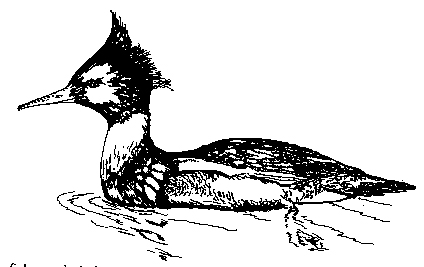
A}laaya{
- Mergus serrator
A}laaya{
hanim saa aku{, hanim sangis malganangis ilagaan itxa{taa}utaza{.
A}laayam hiiyukangis i}i}idal adukus, iga}iisi{ liidaa}utazas,
kanuuya{ angali{takus, sam qas qa{tangis lakus mal
hiiyukangis hiikus ngaan agu{izas. Uku}anaa aagayuu}im
hiiyukaa hizax liidaaguzaza{.
A}laayam
ali}ii hakangis sas matazakungis mal sugdanaza{, kamgii
chid}aayul hachii qaxchikda{ ama quhma{ aza{. Hiiyukaa
ama kitakix uluudana{ liidaza{. A}laayam ayagagan hachii
quuhmliigina{ liidaku{, kamgii chumnugim qaxchikdagan
i}duxtana{ liidaa aku{, ilidaa quhmaza}, ama igasigan
agalan utmaa aaka{ akiita{ hakangis quhmaza{.
A}laayas
udang al slum huzuu agzas. Hanim sangis matazakungis
mal mayaa}sxanaa{s agungis i}atul ahmi}angis axsxaakaza}ulas.
A}laayas qakuchas qa{tazakus mal una}al qalgal agudix
qanuna{ liidazas.
Saaqudgim
aslaan udang isxa}il, saahmlas matazakus. Hanis asxuunulax
tan}is uuquchiingi}i}ulangis kugan, kingtim sitxan
asxuunulax ti}yum adugan ilan saahmIa}izas. Qamchiing
asxuunulax hati{ aaka{ saahmla{tazas. Saahmlangis uluudam
angalidigaa angali{tazas. A}laayam saahmlangis chiidatulakan
agungis qalgazas.
Red-breasted
Merganser - Mergus serrator
The
red-breasted merganser is a freshwater duck, but it
is different from the other freshwater ducks. They
have long thin orange bills that look like the edge
of a saw blade. They feed on fish
so their bills are well adapted for that purpose.
The
drake, like many of the other duck species, has very
fancy feathers. Its head is green, and its back is
black and white. Its bill and feet are reddish orange.
The hen, on the other hand, has a kind of grayish body
feathers. Its head is brown. Its belly side feathers
are whitish. The middle part of its wings are white.
The
mergansers spend all year here, and like the other
freshwater ducks, they are very difficult to hunt.
This is because they can be spooked very easily. Because
the merganser feeds on fish, it has a fishy taste when
it is cooked.
The
mergansers nest here during the summer. They nest near
the lakes on the islands without foxes. Their nests
are usually found under a grassy bank, or in the long
grasses. They lay from eight to ten eggs a year. The
eggs are pinkish orange in color. They can be eaten
if they have not been incubated for long.